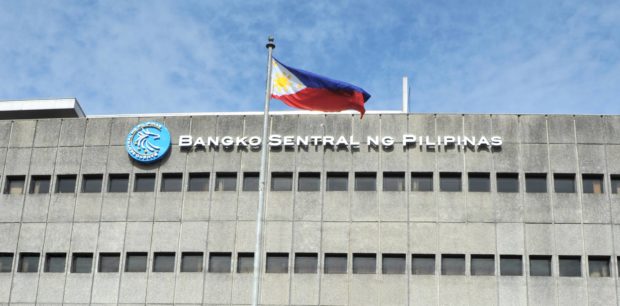
Photo courtesy of Bangko Sentral ng Pilipinas Facebook Page
MANILA, Philippines—The September inflation rate, lower than expected, has given the central bank more room to maintain its interest rates at their current historic lows, according to market watchers, even as the agency warned that the consumer price index will remain elevated before returning to within the government’s target band later this year.
In a statement, the Bangko Sentral ng Pilipinas (BSP) also stressed that the current inflation regime is, for the most part, out of its hands and can only be remedied by policies that would ease supply problems.
“These supply-side shocks are best addressed by timely non-monetary policy interventions that could ease domestic supply constraints,” the BSP said.
“The return of inflation to the target range is highly contingent on the successful implementation of these supply measures,” it said.
ING Bank Manila senior economist Nicholas Mapa noted that the 4.8-percent September inflation rate — lower than the previous month’s 4.9 percent, and at the low end of the central bank’s 4.8-5.6 percent prediction — has given authorities a reprieve from calls for tighten monetary policy.
“Pressure has been building on the BSP to hike prematurely but the surprise inflation print helps the central bank justify its current stance,” Mapa said in an email to reporters.
“BSP has indicated its preference to give the economy a little more breathing room to aid in the recovery until clear signs of a recovery are evident,” he said.
A Bloomberg News poll of analysts and economists yielded a median expectation of 5.1 percent for September.
The BSP said the average rate of increase in the prices of basic goods and services is expected to settle “close to the midpoint of the target range in 2022 and 2023 with inflation expectations remaining firmly anchored to the target.”
“The recent slower inflation was mainly due to the lower annual rate of increase in the transport index,” the regulator said.
It added that recent inflation upticks are expected to be driven largely by supply-side factors related to weather disruptions, global oil prospects, and continued impact of the African Swine Fever.
The central bank has committed to keep interest rates low for now, despite the high inflation rate, stressing that the Philippine economy needs more help to recover from its deepest postwar slump caused by the coronavirus pandemic.
“The risks to the inflation outlook remain tilted towards the upside for the remaining months of 2021, but remain broadly balanced for 2022 and 2023,” the BSP said.
“Upside risks may come from pressures on world commodity prices, effects of weather disturbances, and prolonged recovery from the ASF outbreak,” it added. “On the other hand, downside risks are seen from the spread of more contagious COVID-19 variants and weaker-than-expected global growth prospects.”
Mapa, who was among market watchers expecting the September inflation rate to breach 5 percent, conceded that “the pickup in prices was not as severe as expected.”
“This highlights the cost push nature of the recent inflation surge with prices accelerating quickly once supply disruptions take place and dissipating just as fast once bottlenecks are eased,” he said.
“Demand side pressures would have been more pervasive and persistent especially as the economy opened up further in September. Thus its quite clear that the cost push pressures remain the dominant driver of the current inflation spike.”